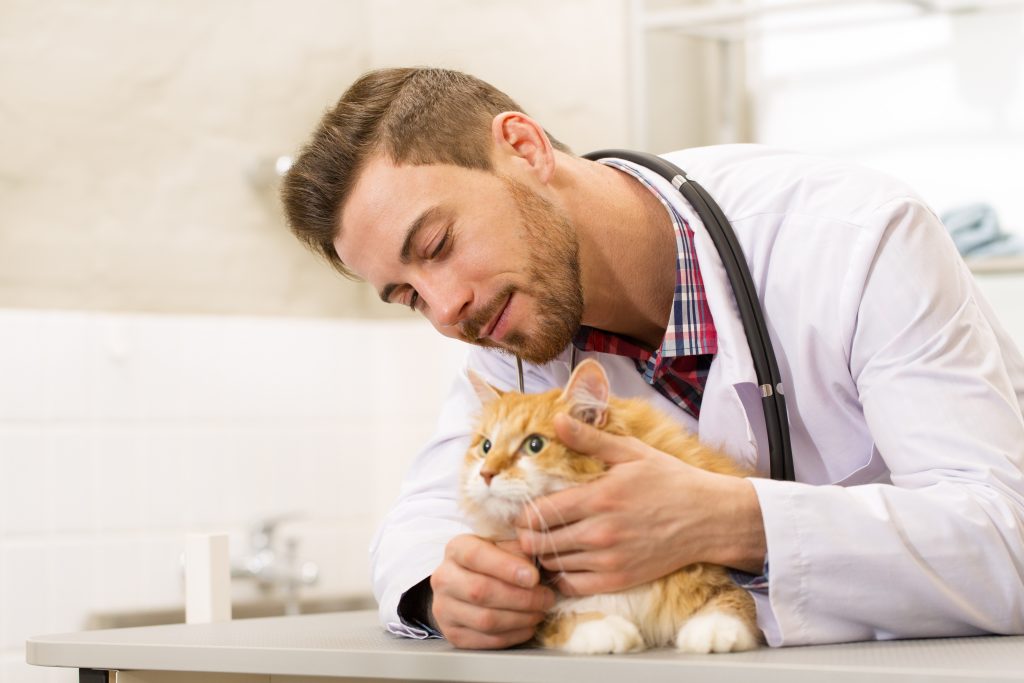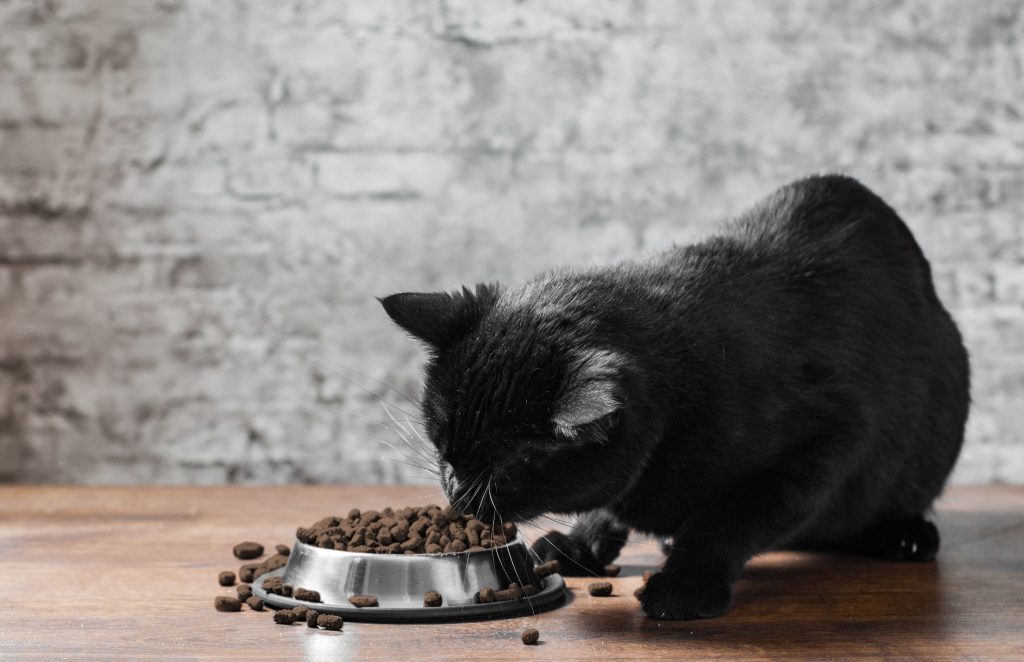Free feeding cats is a very common practice in many households, but just because it is common does not mean it is the best option.
Indoor Cats are typically not Highly Active
Typical indoor cats are not considered “highly active,” rather they are more often a moderate or low activity level. Living indoors simply does not provide the space or stimulation that cats are adapted to. In an environment that lacks stimulation, cats will often eat when there is nothing else to occupy them. Free feeding makes it easy for indoor cats to consume more calories than they are expending, leading to weight gain and possible obesity.

Cats are not natural Grazers
When food is always available, you may see your cat eating at a variety of times throughout the day. Although it seems like your cat is grazing all day, picking out just a few kibbles here and there, in reality they are eating meals. Having a full bowl of food available 24 hours a day allows cats to eat many full meals in a day, often more meals than they should based on their energy expenditure.
Food Intake is an important Indicator of Health
Cats are very stoic and often do not present signs of illness that are obvious to us. A loss of appetite or reduced food intake can be a helpful early indicator of disease. Early detection of illness increases the chance of successful treatment. When cats are free-fed, it can be difficult to see when consumption has declined.

Cats prefer Fresh Food
When we set food out in a bowl, the oxygen in the air begins to degrade (oxidize) the fat in the diet. Cats are very sensitive to oxidized fat; even a slight breakdown in the structures decreases palatability, leading to a less enjoyable eating experience for cats.
Weight management relies on proper Measurement
When free fed cats begin to gain excess weight, creating a weight loss plan can be tough because it is difficult to know how many calories the cat has been consuming each day making it a challenge to restrict calories. When weight management diets (lower calorie diets) are free fed, cats will typically consume a higher volume of food, resulting in minimal, if any, calorie reduction.

Tips for transitioning to Meal Feeding
When cats are accustomed to having food always available, they end up on their own schedule which might not align with yours.
Measure out half of the day’s food and set it out in the morning, allowing the cat to eat on their own schedule. In the evening, serve the other half of the day’s food.
Adding canned food to the meal can encourage consumption right away and your cat will get use to the new schedule.
Engaging in play stimulates feline appetite, so spend some time interacting with your cat prior to meal time.
Meal feeding promotes Health
Feeding meals instead of free feeding can increase your cat’s health and prevent things such as obesity, which is a precursor for many feline diseases. Feed your cat fresh, appropriately sized meals to enhance their enjoyment and health.












